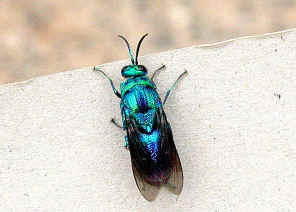

In areas with intensive agriculture, relatively little food can be found for the hornets. Nests are usually found close to habitation (in gardens, parks, city edges) or in the countryside. Asian hornets prefer to nest in urban areas where a lot of food can be found. Regardless the type, the color of the nest is always light brown as it is made up of dead wood fiber. The two nest types differ in location and size. In 70% of the cases, the colony will move from primary to secondary nest. Nest identificationĪsian hornets build two types of nests: a small primary nest in spring and a larger secondary nest as from summer. Distinctive feature Black and shiny with violet and blue reflections. Behavior Often on large flowers, rather rare in Flanders. Other colors are missing unless pollen is stuck on the thorax. Dark wings have violet and blue reflections. Size The size of an Asian hornet, but more chubby. Other look-alike insects Common yellowjacket ( Vespula vulgaris) and German yellowjacket ( Vespula germanica) As the future queens store fat reserves for the winter, they are heavier than the workers. On the other hand, the morphological differences between workers and potential future queens are barely visible to the naked eye. Inside the colony, the laying queen can be recognized by her distended abdomen, the fading orange colour, less hair on the thorax and, at the end of the season, damaged wings. In autumn, the queen of the colony can easily be distinguished from her workers. Picture 3: a female with a finely punctate abdomen, which sometimes show the sting. Picture 2: a male with a notch that shows a pair of yellow spots on the underneath side of the abdomen (showed by the yellow circles). Picture 1: a male with a truncated abdomen.

The antennae of males consist of 13 segments that are serrated, while a female has only 12 segments. In addition, the male antennae are longer and more curved than those of a female. On the other hand, a female has finely punctate abdomen, which sometimes show the sting. The male has a truncated abdomen, with a notch that shows a pair of yellow spots on the underneath side of the abdomen which females do not have. On the right: the distinct black legs with yellows tips of the Asian hornet, (c) Warre-SG. On the left: Median wasp queen, red-brown legs with some yellow pigmentation seen, (c) Michel Garin. Usually two rows of black dots are visible on a yellow background. The first segment (tergite 1) is red-brown and black. The abdomen of the European hornet is yellow for two thirds. The abdomen of an Asian horn is black with only one dark yellow abdomen segment (tergite 4). The legs of smaller wasp species (common yellowjacket, German yellowjacket) are almost completely yellow. In rare cases the red-brown color may fade, but the legs are never black. The legs of the European hornet are completely red-brown. The legs of Asian hornet are black with distinctive yellow tips. The black thorax of other wasp species (common yellowjacket, German yellowjacket) almost always has clear yellow stripes or dots. The red-brown color extends to the top of the head. In Asian hornets, the upperside of the thorax is entirely black, whereas European hornets have red-brown markings on a dark background. The thorax is the part of the body between the head and the abdomen on which the legs and wings are attached. Also, the legs of European hornets are sometimes yellow instead of red-brown. For example, Asian hornets become paler with age and become worn off. Bear in mind colors are sometimes variable. Three simple color features allow to distinguish an Asian from a European hornet. To distinguish Asian from European hornets, use the colour pattern. You will of course probably not get the chance to accurately measure a live hornet. Asian hornet workers and drones are on average 2.5-3 cm long, European hornets are slightly larger with 3-3.5 cm. Workers and drones, or males, are smaller than queens. This is slightly smaller than a European hornet queen, with a length of 4 cm. The Asian hornet is slightly smaller than the European hornet. In Belgium two hornet species occur: the Asian hornet and the European hornet. A simple trick is to think of a 1 euro coin. Hornets are almost twice as big as a wasp or honeybee.


 0 kommentar(er)
0 kommentar(er)
